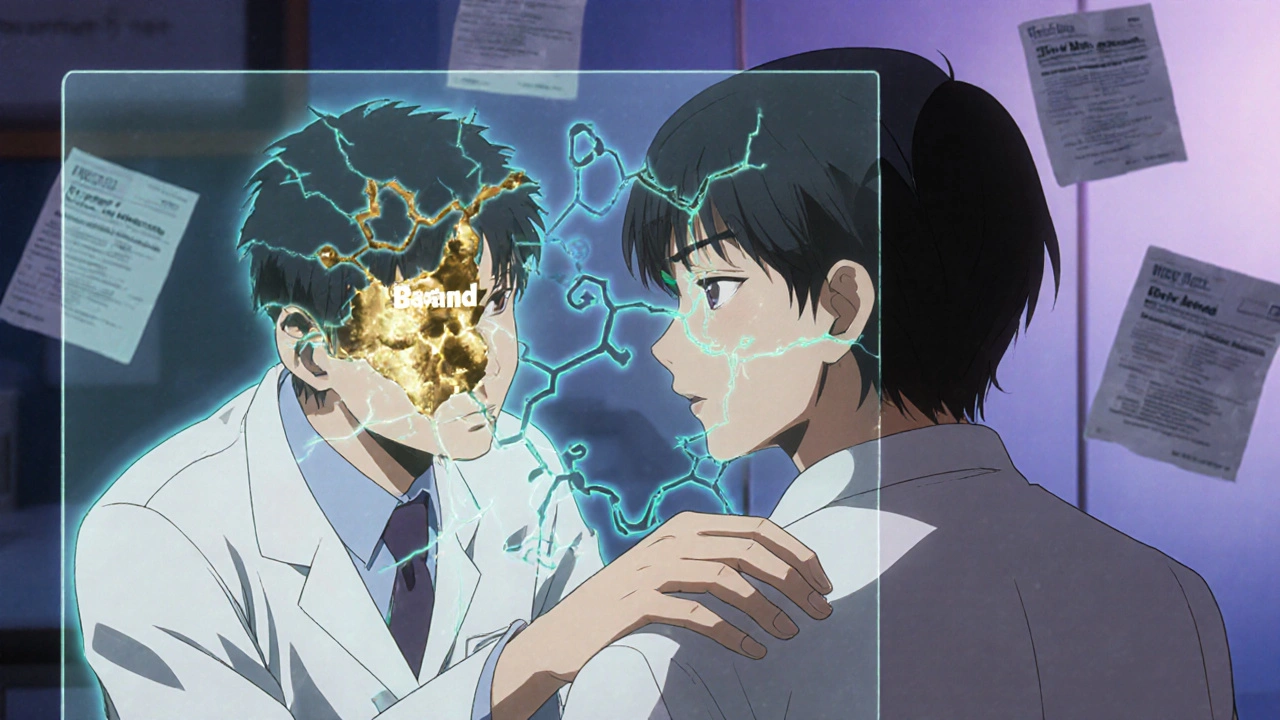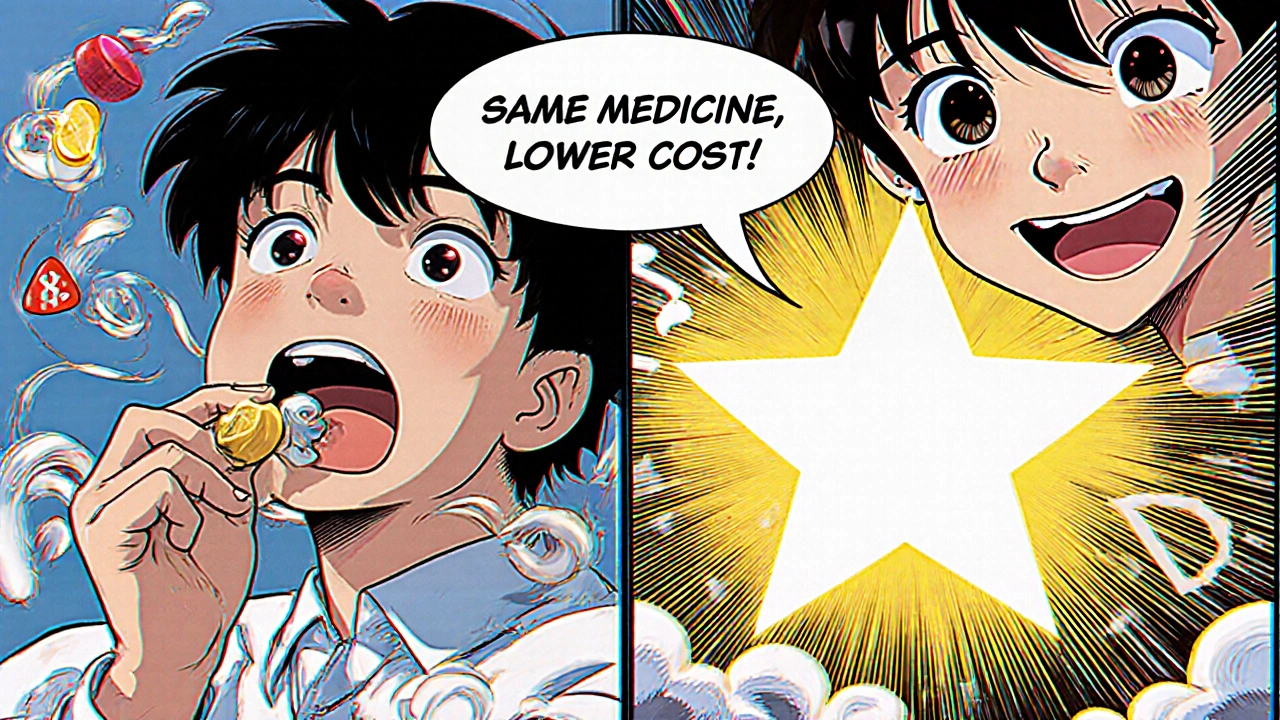When you switch from a brand-name pill to a generic version, your body shouldn’t react differently. The active ingredient is identical. The FDA requires it. So why do so many people suddenly feel worse? Fatigue. Headaches. Muscle pain. Nausea. These aren’t side effects of the drug-they’re side effects of belief.
What the Nocebo Effect Really Is
The nocebo effect isn’t imaginary. It’s real, measurable, and powerful. While the placebo effect makes you feel better because you expect to, the nocebo effect makes you feel worse because you expect to. The word comes from Latin: nocebo means “I shall harm.” It’s the dark twin of placebo. In clinical trials, about 1 in 5 people taking a sugar pill report side effects. Almost 1 in 10 quit the study because of them. These aren’t random. They happen when people are told, “This might cause dizziness,” or “Some users report fatigue.” Suddenly, normal body sensations-like a tired morning or a mild headache-become proof the drug is harming them. This is especially common with generic medications. Even though generics have the same active ingredients, same dosage, and same safety profile as brand-name drugs, patients often believe they’re inferior. And that belief triggers real physical symptoms.Why Generics Trigger the Nocebo Effect
It’s not the pills. It’s the story. When a pharmacy switches your prescription from Lipitor to atorvastatin, you might get a note saying, “Your medication has changed.” That’s it. No explanation. No reassurance. You’re left to fill in the blanks. And your brain, wired to protect you, assumes the worst: This isn’t the same. It’s cheaper. It won’t work. It might hurt me. Studies show that when patients are told, “This is a generic version that might not work as well,” they report 65% more side effects than those told nothing at all. Even when the drug is identical. One study on statins found that people taking sugar pills reported muscle pain at the same rate as those taking real statins. The difference? The ones who knew they were on a statin were told it could cause muscle aches. The sugar pill group? They weren’t. And yet-same symptoms. Another study on beta-blockers showed patients who were warned about sexual side effects were 3 to 4 times more likely to report them-even though the drug didn’t cause them any more than a placebo. Your brain doesn’t distinguish between a real drug and a suggestion. If you’re told something might happen, your nervous system starts looking for it. And when it finds even a hint-like a slight ache or a moment of drowsiness-it labels it: This is the generic.Real Cases: When Belief Becomes Symptoms
In New Zealand, when the antidepressant venlafaxine switched from brand to generic, reports of side effects stayed low-until the media ran stories about “dangerous generic switches.” Then, reports spiked. The medication hadn’t changed. The fear had. In the U.S., a study found that 32% of patients switched from brand-name to generic antidepressants reported new side effects. Only 12% of patients who were told the switch was safe and effective reported any issues. Even more telling: some patients who reported muscle pain after switching to generic statins still felt the pain-even after going back to the brand-name version. The drug wasn’t the problem. The fear was. Reddit threads are full of stories like this: “I switched to generic Adderall and felt like I was dying. Went back to brand. Instantly better.” Doctors who read these often say the same thing: “It’s not the pill. It’s the story.”
How Doctors and Pharmacies Make It Worse
It’s not just patients. Clinicians play a role too. A 2022 study found that doctors who received training on the nocebo effect reduced patient-reported side effects during generic switches by 28%. Why? Because they changed how they talked about it. Instead of saying, “This is a generic,” they say, “This is the same medication, just less expensive.” Instead of saying, “It might not work as well,” they say, “It works just as well and saves you money.” The European Medicines Agency and the FDA both recommend avoiding language that implies difference. Yet many pharmacies still hand out leaflets that say things like, “This product may differ slightly in inactive ingredients.” That’s true-but it’s also misleading. Inactive ingredients don’t affect how the drug works. But patients hear “differ” and think “worse.” Even the color and shape of the pill matter. A 2019 study showed patients reported more side effects when the generic looked different from the brand-even if the active ingredient was identical. Your brain associates the look with the experience. Change the look? Change the expectation.The Cost of Belief
This isn’t just about discomfort. It’s about money. Generics make up 90% of prescriptions in the U.S. but only 24% of drug spending. Why? Because people stop taking them. JAMA Internal Medicine estimates that nocebo-driven discontinuation of generic medications costs the U.S. healthcare system $1.2 billion a year. That’s billions in unnecessary brand-name prescriptions, ER visits, and doctor appointments. The World Health Organization lists “negative perceptions about generic medicines” as a top barrier to treatment adherence in 67% of countries. Pharmaceutical companies are starting to notice. Pfizer launched a “nocebo mitigation” campaign for its generic atorvastatin, using clearer patient materials and positive framing. Result? A 22% drop in adverse event reports.
How to Fight the Nocebo Effect
You can’t fix the nocebo effect by changing the pill. You fix it by changing the conversation.- Don’t say “generic.” Say “same medicine, lower cost.”
- Don’t mention differences. Emphasize equivalence. Bioequivalence testing isn’t a loophole-it’s a guarantee.
- Don’t warn about side effects unless asked. Telling someone a side effect might happen makes it more likely they’ll feel it.
- Use positive framing. “This medication has helped millions. It’s safe. It works.”
- Explain why the switch happened. “Your insurance requires this to keep your costs down. But it’s the same drug.”
The Future Is in Expectations
Scientists are now studying whether genetics play a role. Early findings suggest people with certain variations in the COMT gene may be more sensitive to negative expectations. That could mean future treatments will be tailored not just to your biology-but to your psychology. By 2025, 75% of healthcare systems using generic substitution are expected to have formal nocebo mitigation strategies. That’s progress. But it starts with one thing: trust. If you’re switching to a generic, remember: the pill doesn’t change. The story does. And you get to rewrite it.Can generic medications really cause side effects just because I expect them to?
Yes. Even though generics have the exact same active ingredient as brand-name drugs, negative expectations can trigger real physical symptoms like headaches, fatigue, or muscle pain. This is called the nocebo effect. Studies show patients who believe generics are inferior report side effects at much higher rates-even when they’re taking a placebo.
Why do people feel worse after switching to a generic pill?
It’s not the pill-it’s the perception. If you’re told the generic might not work as well, or if it looks different from what you’re used to, your brain starts scanning for problems. Normal body sensations get misinterpreted as side effects. Media stories, pharmacy notes, and even doctor comments can amplify this. The drug hasn’t changed. Your expectations have.
Do doctors know about the nocebo effect with generics?
Many don’t-but awareness is growing. Research shows that doctors who are trained to communicate positively about generics reduce patient-reported side effects by nearly 30%. The FDA and EMA now recommend avoiding language that suggests generics are different or inferior. Still, most patients receive no explanation at all during a switch, leaving room for fear to fill the gap.
Is it safe to take generics long-term?
Absolutely. Generics must meet the same strict standards as brand-name drugs for safety, strength, purity, and performance. The FDA requires them to be bioequivalent-meaning they work the same way in your body. Millions of people take generics safely every day. The only risk comes from negative beliefs, not the medication itself.
How can I avoid the nocebo effect when switching to a generic?
Ask your pharmacist or doctor to explain that the generic has the same active ingredient and works the same way. Don’t focus on differences. Focus on equivalence. Avoid searching online for stories about “bad generics”-that reinforces fear. If you feel a new symptom, wait a few days. Often, it’s your brain reacting to the change, not the drug. If symptoms persist, talk to your provider-but don’t assume it’s the medication.
Do insurance companies push generics because they’re cheaper, even if it causes problems?
Yes, generics are cheaper-but that’s not the problem. The problem is how the switch is communicated. Insurance companies push generics because they’re safe and effective. But if patients aren’t properly informed, the nocebo effect kicks in, leading to unnecessary discontinuation and higher costs. The goal should be to make the switch smooth and reassuring, not just cost-saving.

Sheldon Bazinga
November 22, 2025 AT 02:07Sandi Moon
November 22, 2025 AT 18:36Kartik Singhal
November 24, 2025 AT 15:13Logan Romine
November 24, 2025 AT 23:20Chris Vere
November 26, 2025 AT 06:07Pravin Manani
November 27, 2025 AT 01:57Mark Kahn
November 28, 2025 AT 16:42Leo Tamisch
November 28, 2025 AT 20:09Daisy L
November 29, 2025 AT 18:06Anne Nylander
November 29, 2025 AT 23:06